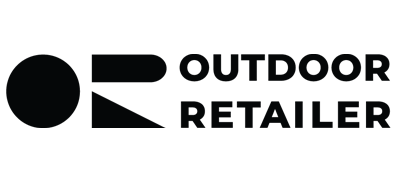Amer Sports, the parent company of Arc’teryx, Salomon, and Wilson, plans to continue to grow its DTC channel through owned stores and direct digital sales.
“We believe we have a unique opportunity to continue shifting our business model from wholesale to DTC, while driving higher operating profitability,” reads the company’s recently released annual report.
Amer grew revenue by more than 17%, or 19% in constant currency, to $5.183 billion in 2024. DTC grew from 36.1% of the company’s revenue in 2023 to 43.7% in 2024. Wholesale accounted for 56.3% of Amer’s revenue in 2024, down from 63.9% in 2023.
DTC revenue grew 42.7% in 2024 compared to the prior year.
“Our brand-direct operating model allows our brands to execute their own curated go-to-market strategy to best align with their consumers’ shopping behavior,” reads the report.
Arc’teryx, Salmon Store Growth
Amer increased its net store count by approximately 50% to 500 owned retail stores as of Dec. 31, 2024, according to the report.
Arc’teryx opened 33 net new openings, nearly half in North America, which helped drive 36% revenue growth for the technical apparel segment, which also includes Peak Performance. New locations include a 14,000 square-foot, two-story flagship in the Soho neighborhood of New York City; a 7,400 square-foot, four-level Alpha store in Shinjuku, Tokyo, and Arc’teryx’s first-ever European mountain-town shop in Chamonix, France.
In total, Arc’teryx operated 176 stores as of Dec. 31, which include:
- 75 stores and 20 factory outlets in Greater China
- 65 stores and 7 factory outlets in North America.
- 25 stores and 5 factory outlets in Asia Pacific.
- 11 stores and two factory outlets in Europe.
Arc’teryx sees expansion opportunity in Asia Pacific and Europe.
“In Europe, there are retail opportunities in large metro areas such as Paris, as well as iconic, outdoor locations across the Alps, including Zermatt, Switzerland and St. Anton, Austria, where important community-building ‘mountain stores’ are targeted to create authentic brand positioning,” says the report.
In 2024, DTC technical apparel sales – which include Arc’teryx and Peak Performance – grew 42.8% to more than $1.5 billion. Wholesale in that segment grew 21.8% to $645 million. DTC is Arc’teryx’s primary vehicle, and brand stores generated approximately $1,928 per square foot in 2024.
“While Arc’teryx has a strategic wholesale footprint that will remain an important element in its distribution strategy, we expect owned retail and e-commerce to continue to enable DTC to be the brand’s fastest growing channel,” says the report.
Wholesale plays a more significant role for Salomon, according to the report, but that brand will also increase its retail footprint. DTC grew from 15% of Salomon’s revenue in 2020 to 33% in 2024. As of Dec. 31, the brand opened 100 Salomon shops in Greater China and opened its first U.S. standalone Salomon store in New York City.
Wholesale Opportunities
“Many of the brand’s specialty retailer partners focus directly on Salomon’s core competencies, including product expertise in hiking and trail running,” says the report. “Within outdoor and trail running shoes, Salomon is focused on consolidating the number of accounts and improving productivity.”
Within Salomon’s more casual sportstyle category, the brand aims to improve productivity and expand the number of its retail partners.
“Salomon intends to further increase its number of strategic wholesale accounts in Europe, especially in underpenetrated areas of Western Europe, as well as the United States where Salomon seeks to target top-tier sporting goods retailers.”
Sportstyle is Salomon’s fastest growing collection, with a 35% share of footwear revenues in 2024.
The Risks of DTC
While Amer is investing in DTC, it is aware of the risks, which include potentially alienating wholesale partners, which still account for a significant portion of its revenues.
“Many of our wholesale partners also compete with each other, and if they perceive that we are offering their competitors better pricing and support, they may reduce or discontinue purchases of our products,” reads the report.
“In addition, we compete directly with our wholesale partners by selling our products to consumers through our DTC channel,” it continues. “If our wholesale partners believe that our DTC channel diverts sales from their stores, this may weaken our relationships with our partners and cause them to reduce or discontinue purchases of our products.”
According to the report, no single wholesale customer accounts for more than 10% of total accounts receivable. Its 20 largest wholesale partners account for 33% of total accounts receivable.
Economic Uncertainty and Tariffs
Economic uncertainty, tariffs, and consumer confidence could also impact the company’s growth plans, it warned.
“If and when the retail economy weakens or as consumer behavior shifts, retailers may be more cautious with orders,” reads the report. “A slowing or changing economy in our key markets could adversely affect the financial health of our wholesale partners, which in turn could have an adverse effect on our results of operations and financial condition.”
Amer sources approximately 29.8% of its global sourcing from the People’s Republic of China, 39.3% from Vietnam, and less than 1% from Canada and Mexico.
“Trade tensions have continued to escalate in recent years between the United States and the PRC, with each country imposing significant, additional tariffs on a wide range of goods imported from the other country,” reads the report.
“Trade actions, including the imposition of new or increased tariffs on various products as well as import/export licensing requirements and restrictions have subjected, and may continue to subject, us to additional costs and expenditure of resources. It may be time-consuming and expensive for us to alter our business operations in order to adapt to or comply with any such changes.”
Kate Robertson can be reached at kate@shop-eat-surf-outdoor.com.






